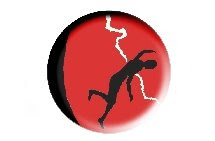
Clear-cut cataplexy coexisting with excessive daytime sleepiness points directly to the diagnosis of narcolepsy. The other 2 classic symptoms found in narcolepsy are sleep paralysis and hypnagogic hallucinations. In sleep paralysis, a patient becomes transiently unable to move before sleep onset or just after awakening. Hypnagogic and hypnopompic hallucinations are vivid, frightening dreams, often with a sensation of flying, that similarly occur at the time of transition from sleep into wakefulness or the reverse. (Mayo Clinic)
- - - - - - - - -
In sleep paralysis... most sleep-related hallucinations are visual and incorporate elements of the actual environment. For instance, individuals may describe objects appearing through cracks in the wall or describe objects moving in a picture on the wall. The hallucinations may also be auditory (e.g., hearing intruders in the home) or kinetic (e.g., sensation of flying). ( American Psychiatric Association)
________________
So what is the explanation for why people with narcolepsy often experience sensations of flying, particularly at the beginning or end of the episode?
______________
Links
.
Narcolepsy: New Understanding of Irresistible Sleep
.
Diagnostic Criteria for Narcolepsy
.
Source of Image
.
http://www.macalester.edu/psychology/whathap/UBNRP/narcolepsy04/index.html





No comments:
Post a Comment